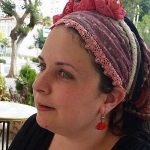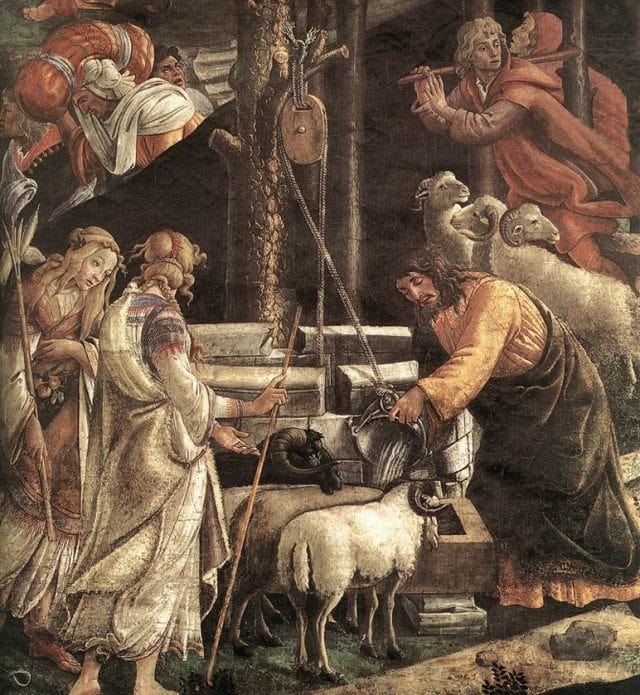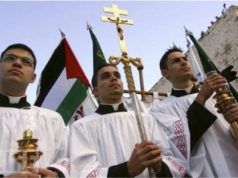.By Rachel Avraham
Today, the Druze people in the Carmel Mountains and the Galilee are known to be staunch supporters of the State of Israel. However, the history of the Druze people supporting Israel is long, dating back to antiquity. The Druze-Jewish alliance dates back to the days of Jethro, who took his future son-in-law Moses into his home, when he fled from the Egyptian pharaoh who enslaved the Jewish people.
Ayoob Kara is a prominent member of the Druze community who served as Communication, Cyber, and Satellite Minister. He noted: “There was not anyone else who wanted to host Moses. Moses was all alone because two had reported how he had killed the Egyptian taskmasters. Only in Median was Moses able to find refuge in Jethro’s home.”
Kara recalled how Tzipporah, Jethro’s daughter, became the wife of Moses: “Moses helped Tzipporah when she was taking care of the animals and gave them water, even though the herders did not agree to water them. Moses fought with the herders. When Tzipporah went with the animals back home, she told her father about what happened, and Jethro asked Tzipporah to bring Moses to his house.”
Subsequently, after Jethro became the father-in-law of Moses, the Jewish Bible recalls how Jethro advised Moses and helped him to formulate a more effective way of enforcing Jewish law.
However, the Druze believe that Jethro was far more influential than that. As Kara noted, “He convinced Moses how best to bring his Jewish people from Egypt to the Holy Land. Jethro gave Moses a rod. This rod was very blessed. This rod struck the sea and the sea opened, and after that, when the Egyptians tried to catch up with the Jewish people, the water came back and killed the Egyptians. When the rod struck a stone, it produced water. And when he dropped the rod, it became a snake.
When Moses went to Mount Sinai to bring the Ten Commandments, he came back with Ten Tablets, while Jethro came with Tzipporah and the children to see him. Moses was incredibly happy that Jethro, Tzipporah, and the children came. On Mount Sinai, Moses accepted the Torah and he trusted Jethro more than anyone including Aharon his brother.”
According to Kara, from Jethro’s time until the Second Temple period, the Druze nation was part of the Jewish public: “They provided security around the Temple Mount. They served as Cohens in the Holy Temple. But after the destruction of the Second Temple, the Druze nation became part of the Middle East nations. They adjusted themselves to regional developments. But they never forgot the Jewish people. They did not forget that Moses is their prophet. They did not forget that their key prophet is Jethro. They did not forget that Yehuda is a prophet of theirs and not only a leader. They did not forget that Zebulun and Eliyahu Ha-Navi are prophets.”
Although the Druze religion was officially established in the 11th century in Egypt, the Druze believe that “this was not a new religion but a renewed appearance of a very old belief in one G-d whose believers lived among the people without revealing their identity. The discovery of the faith in the days of Al Hakim gave people a final chance to join a religion that professed the unity of G-d, accepting all obligations and commandments associated with this faith.” According to Kara, under Al Hakim, the Druze became the dominant religion in Egypt and led the Fatimid state for a while.
“For the Druze, al Hakim is a holy and revered figure, the embodiment of G-d on earth,” as Dr. Salman Falah wrote in his important book titled The Druze in the Middle East. “He issued laws and ordinances to prevent corruption among officials who misused the regime’s money, or oppressed or exploited the people. Merchants who overcharged were severely punished. He ordered the storage of food in the years of plenty to lighten the expected shortage in the years of drought. He saw to it that every citizen had a job and would find dignified work without being exploited or mistreated.”
According to Dr. Falah, “During his reign, Dar Al Hikmah (Wisdom House) was built. It was a kind of university, with a large library and a museum, and constituted a gathering point for scholars, poets, and philosophers. Since he admired science and literature, Al Hakim made available all the necessary conditions and in return asked for literary creation and scientific achievement. Al Hakim liberated all the slaves in his kingdom, so that they could decide freely whether they wished to be counted among the new believers. Every person who accepted the religion made an irreversible commitment to fulfill the religious tenets. He committed himself to be healthy in body and mind and free of all subjugation. Many did answer the call, particularly in Syria, Lebanon, Israel, the Arabian Peninsula and India.”
However, despite all the great things that Al Hakim did, Arab historians tend to vilify him and his Druze followers: “Nashtakin al-Darazi, an emissary of the religion, later found a separate religion and took to calling himself a living god on earth. Imam Hamza bin Ali of Muwahhidoon and other leaders of the Muwahhidoon fought back and prevailed, but al Darazi caused great damage to the Muwahhidoon. Later historians did not distinguish between the principles of the Muwahhidoon religion and those of al Darazi. Ironically, after the Sunni majority in Egypt rejected the Muwahhidoon religion years later, its believers were termed Druze after al Darazi. Since they possessed a sense of great internal power, they did not bother to change the name and it has stuck to this very day.”
Kara concurred with Dr. Falah: “They call the Druze the Druze for Al Darazi wanted the whole Middle East to be Druze, but he was not successful. The Muslims killed him, and he left behind a lot of followers in Syria, Lebanon, Israel, and Jordan. There are about one million Druze in all the world, with 150,000 residing in Israel. There is no independent Druze nation. Because of that, most Druze do not like to say the truth and they hate the name Al Darazi, but in truth, most are afraid of the Muslims and Al Darazi fought against the Islam to win converts. After that, the Druze were a target for the extremist Muslims.”
The first recorded evidence of Druze settlement in the land of Israel can be found in a book known as Al Mu’allaf, which mentions Safed as a center of the Druze faith when the faith was officially established in the 11th century. However, the account of Evliye Tshelebe (1649-1670) claims that the Druze inhabitants knew from the days of their ancestors the burial places of prophets and sons of prophets: “Perhaps we can assume that this is a hint of the antiquity of their settlement.”
This is Part 1 of a 3-part series on the history of the Druze and and the Jews of Israel.
Sources:
 Rachel Avraham is a political analyst working for the Safadi Center for International Diplomacy, Research, Public Relations and Human Rights, which is run by Mendi Safadi, a former Likud Candidate for the Knesset and a former chief of staff of former Israeli Communication Minister Ayoob Kara. Since 2012, she has been working as an Israel-based journalist and writer, covering Iran, Kurdistan, Turkey, Iraq, Syria, the Israeli-Palestinian conflict and other developments in the greater Islamic world.
Rachel Avraham is a political analyst working for the Safadi Center for International Diplomacy, Research, Public Relations and Human Rights, which is run by Mendi Safadi, a former Likud Candidate for the Knesset and a former chief of staff of former Israeli Communication Minister Ayoob Kara. Since 2012, she has been working as an Israel-based journalist and writer, covering Iran, Kurdistan, Turkey, Iraq, Syria, the Israeli-Palestinian conflict and other developments in the greater Islamic world.
Her articles have appeared in the Washington Times, the Hill, Front Page Magazine, the Daily Wire, the Christian Post, the Baltimore Jewish Times, the Jerusalem Post, Israel Hayom, Ahval and many other publications across the globe. She received her MA in Middle Eastern Studies from Ben-Gurion University. She got her BA in Government and Politics with minors in Jewish Studies and Middle Eastern Studies from the University of Maryland at College Park.
Ken`s new book The Multifront War is now available in 190 countries via Amazon and also on BNs in the US. Buy it now!
.
.
.






